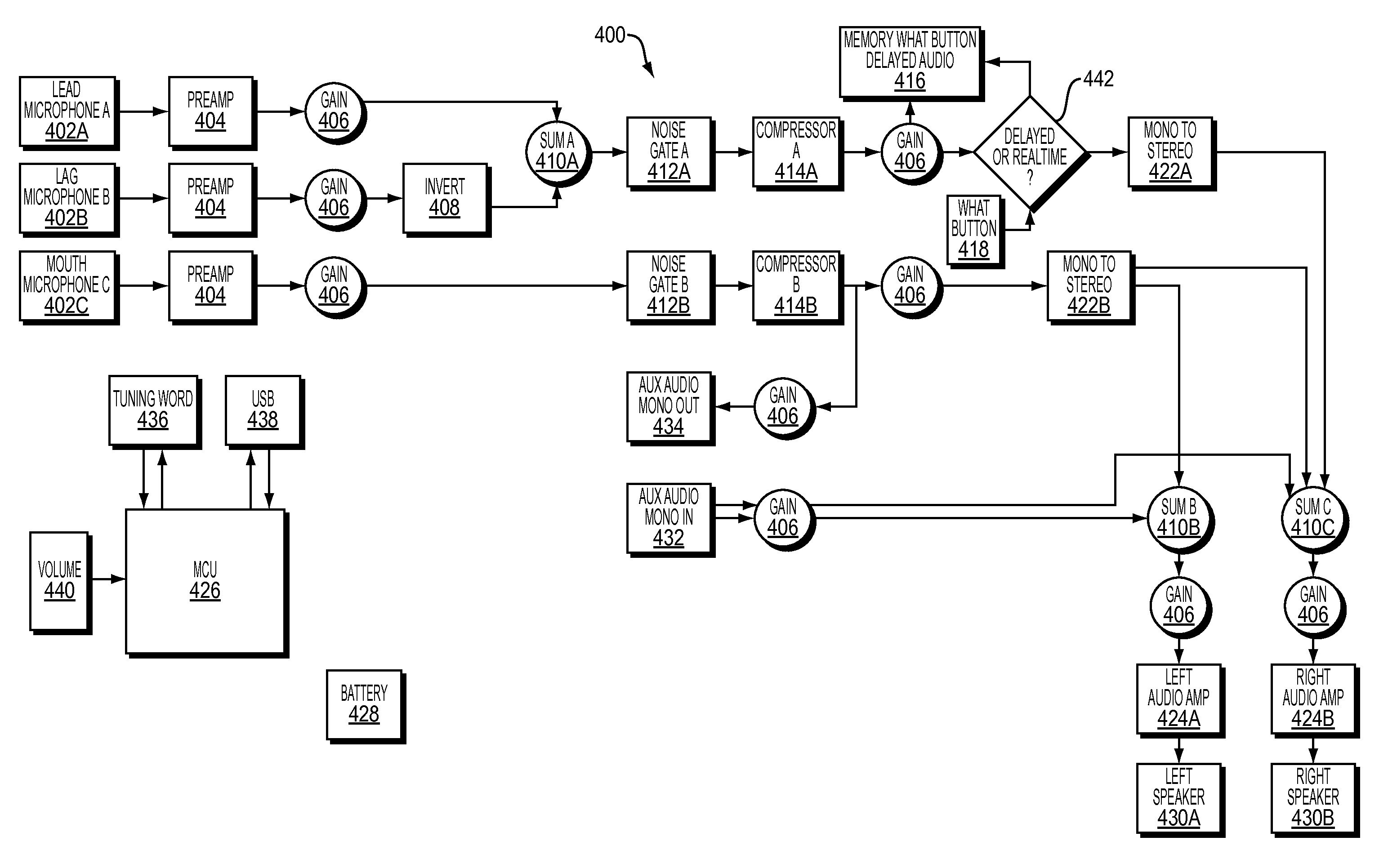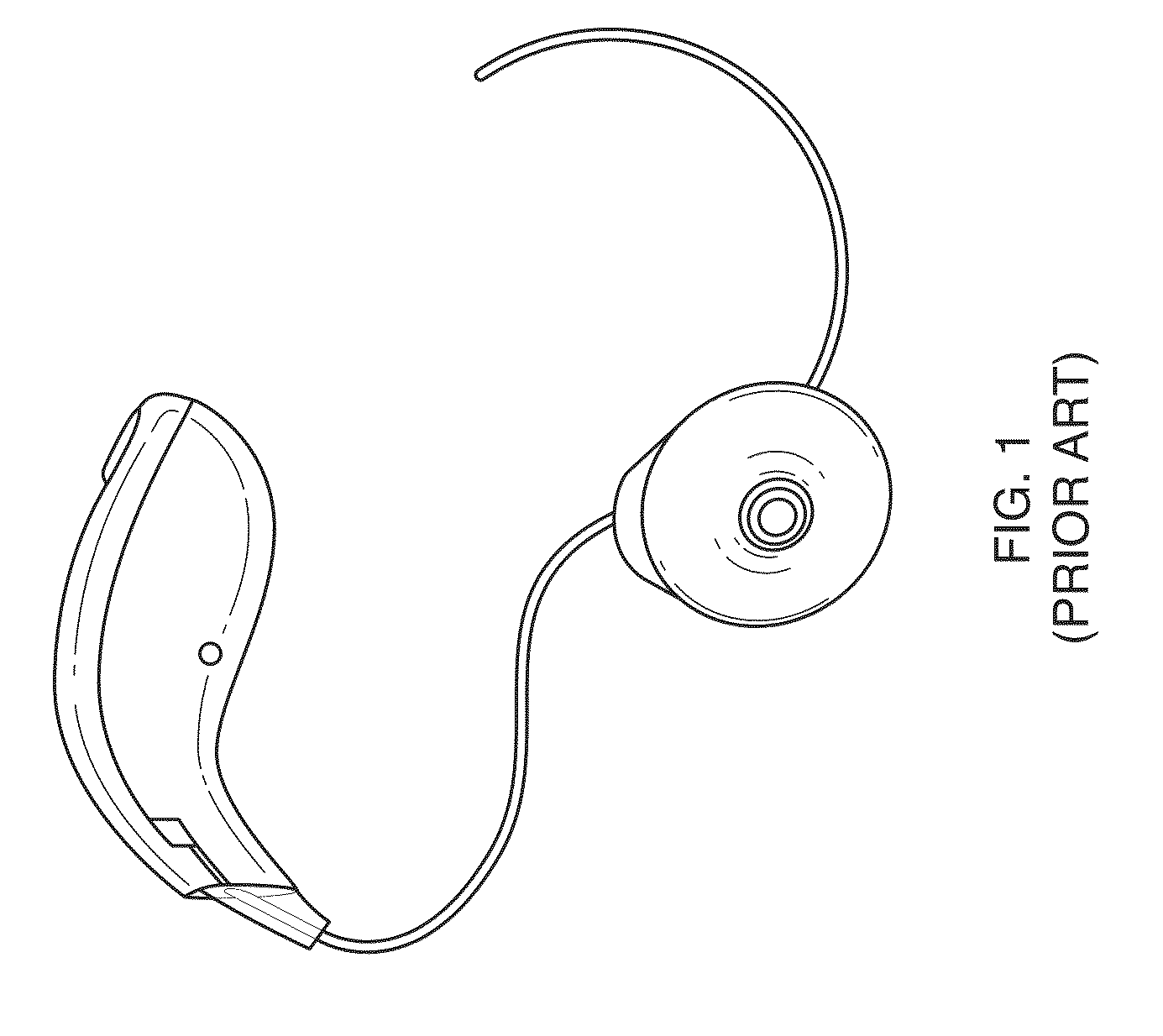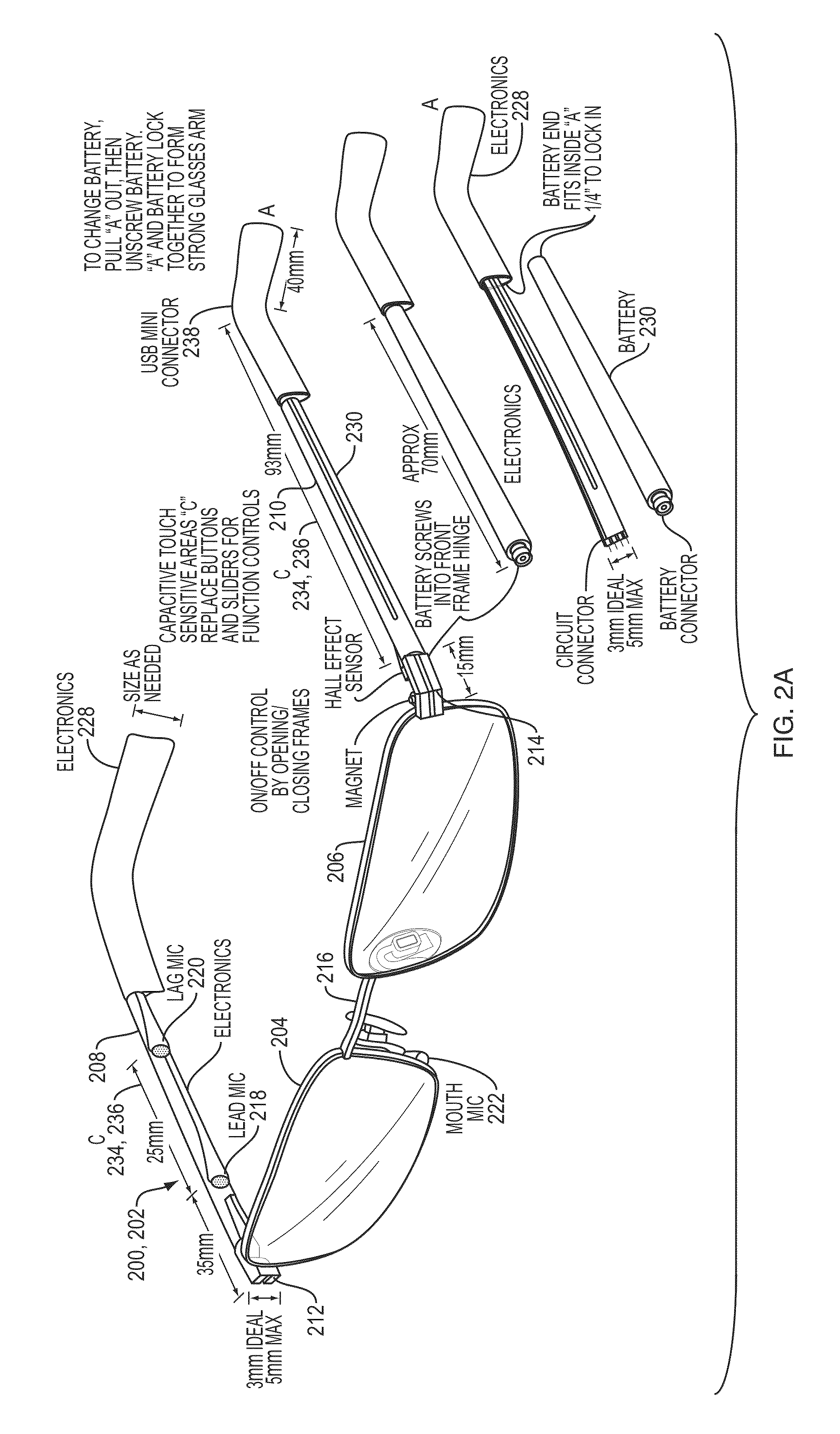Hearing assistance system
a technology of hearing aids and auxiliary devices, applied in the field of hearing aids, can solve the problems of poor sound quality, poor quality, cost and unsightly appearance, etc., and achieve the effect of blocking out environmental nois
- Summary
- Abstract
- Description
- Claims
- Application Information
AI Technical Summary
Benefits of technology
Problems solved by technology
Method used
Image
Examples
example earphones
[0121]In one embodiment, for example as shown in FIG. 2B, speaker 224 may be situated on side 210. Speaker 224 may include a metallic package and may be coupled to a driver circuit in the electronic circuit block. Thus, sound signals (such as speech) received at microphones 218, 220, 222 may be processed and transmitted by electronic circuit block 228 to the drive circuit to drive speaker 224. In one embodiment, speaker 224 may include a tongue on which a first end of extension tube 226 may fit on.
[0122]In one embodiment, for example as shown in FIG. 2B, extension tube 226 may be flexible and composed of rubber or plastic. Extension tube 226 may include a hollowed core. A first end of extension tube 226 may be sealed by a first membrane, and a second end of extension tube 226 may be sealed by a second membrane. The first and second membranes may be passive radiator membrane that does not contain a voice coil or magnet assembly. The first end of extension tube 226 may include a ring ...
example v -
Example V-Channel Interlocks / Connecters for Earbud Attachment
[0128]The V-channel interlocks / connectors for earbud attachment is a similar embodiment to the cone shaped interlocks / connectors for earphone attachment. The V-channel connectors embodiment, the speaker is connected to the same flexible hollow tube 226 as described for the cone shaped connector. As shown in FIG. 2M-1 through 2M-3, in the V-channel embodiment, an earbud 207 may be attached to an arching shaped earclip 205, such as shown in 213, which may be positioned over the user's ear. The hollow tube 226 may be positioned inside the earclip 205 and attaches to the earbud 207 when the earbud 207 is secured at the bottom of the earclip. At the top of the earclip 205, a connector 203 may be position on the earclip 205 by means of a ball joint, and attached to the connector may be a male “V” shaped channel 211. An interlock strip 201 with female “V” shaped hole 209 may be mounted on the glasses at201 where the ear meets the...
example side frame batteries
[0133]FIGS. 2E and 2F illustrate a hearing assistance device 200 according to other embodiments of the disclosure. In some embodiments, the hearing assistance device 200 may be built around a pair of glasses 202 including rims 204, 206, sides 208, 210, hinges 212, 214 for connecting sides 208, 210 to rims 204, 206, and a bridge 216 for connecting rims 204, 206. Rims 204, 206 may hold lenses so that the glasses 202 may function as a visual correction apparatus.
[0134]In example embodiments with details shown in FIGS. 2E and 2F, the hearing assistance device 200 may include a lead microphone 218, a lag microphone 220, a mouth microphone 222, and an electronic circuit block 228. In some embodiments, the hearing assistance device may include capacitive touch sensitive areas 234 and 236. The hearing assistance device 200 may further optionally include an ear bud or earphone. A battery may be magnetically attached to the frame, and the battery may form part of side 210. In some embodiments...
PUM
 Login to View More
Login to View More Abstract
Description
Claims
Application Information
 Login to View More
Login to View More - R&D
- Intellectual Property
- Life Sciences
- Materials
- Tech Scout
- Unparalleled Data Quality
- Higher Quality Content
- 60% Fewer Hallucinations
Browse by: Latest US Patents, China's latest patents, Technical Efficacy Thesaurus, Application Domain, Technology Topic, Popular Technical Reports.
© 2025 PatSnap. All rights reserved.Legal|Privacy policy|Modern Slavery Act Transparency Statement|Sitemap|About US| Contact US: help@patsnap.com



